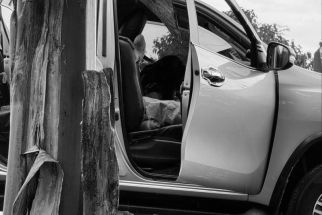Thoughts about Akapela
MANILA, Philippines - Twenty-five years ago, in September of 1988, American composer, musician and singer Bobby McFerrin released an album titled Simple Pleasures. Culled from this album was the single Don’t Worry, Be Happy. What makes this song significant is that it became the first a cappella song to reach No. 1 on the Billboard Hot 100 chart. It stayed there for two weeks. Equally astounding is the fact that McFerrin, through multiple tracks and overdubbing, performed all the vocal parts, using no other instrument but his voice, revealing a highly competent and entertaining song in the a cappella-reggae genre.
A cappella singing has a long history and is easily identified with Christian, Islamic and Jewish singing traditions since many of the sacred texts did not allow instruments to accompany the chants or songs for worship. Although the term a cappella is Italian for “from the chapel†with reference to its religious roots, it has taken a decidedly secular route in the 20th century. From the barbershop quartet-style of harmony, to jazz a cappella; from traditional collegiate a cappella choirs singing varsity tunes to the present beat-boxing a cappella groups, it sure took a long, winding road to get to the 21st-century contemporary a cappella culture.
Before we dig up more research on how a cappella music turned from sacred to profane, from Gregorian chants to the Madrigals, and from the hymnal to rap and hip-hop, let us backtrack just a bit, in more recent times, and check out why there is a resurgence of pop a cappella.
Perhaps, the last biggest pop a cappella monster hit was in 1991 recorded by the group Boyz II Men, with the song It’s So Hard to Say Goodbye to Yesterday, staying on the Billboard charts for 133 weeks. The song was performed entirely a cappella. Probably many of you sing along when Billy Joel’s almost or quasi a cappella song For the Longest Time is played. “Almost a cappella†because the tracks include a bass guitar and a back beat of finger snaps with a layer of brush on snare. The song became a big hit in 1983. The quintet style vocal back-up is reminiscent of barber shop quartet morphing into ’50s to ’60s do-wop.
So drawn to jazz a cappella singing, I trace my early musical influences to The Singers Unlimited, a 1971 four-part jazz vocal group performing amazing, magical vocal arrangements of Gene Puerling, an original member and arranger of the all-male quartet the Hi-Los (1959). Even the popular jazz-gospel vocal group Take 6 cites Puerling as a great influence in the group’s a cappella adventures.
Prodded on and inspired further by the popularity of urban jazz vocalizations of the Manhattan Transfer, I produced my own a cappella one-man album in 1981. It contained six Filipino classics, which I arranged a cappella, together with four of my own originals: Kay Ganda ng Ating Musika, Liman-dipang Tao, Tsismis and Mamang Kutsero. It was given a special citation in the recording industry’s first Cecil Awards the year after for “a pioneering attempt in the recording industry.†That album must have inspired local college groups steeped in the choral tradition to dive into contemporary a cappella, resulting in the formation of such groups as The Tux and the very successful The CompanY, and much later the Akafellas. Decades earlier, college singing groups like the Scheraders and The Ambivalent Crowd, who split from college glee clubs, also experimented on contemporary a cappella, albeit in a relatively small percentage of their respective repertoires.
High school choirs and glee clubs in the Philippines, most noteworthy in Metro Manila in the ’70s and ’80s, joined organized inter-school competitions. In the last five years, the rise in popularity of the high school glee club is being attributed to the TV series Glee. It features contemporary songs that sometimes utilize the a cappella genre. But it was another TV singing competition that pushed contemporary a cappella singing to the forefront: The Sing-Off. This program created a cult following among a cappella fanatics. It produced many popular contemporary a cappella singing groups, most known among them is the ensemble named Pentatonix, a five-member mixed-voice singing group composed of one female and four males.
In the forefront of contemporary a cappella today is the singing quintet called The Real Group (1984 to present), a five-person mixed-voice group from Sweden. The Real Group has performed in more than 2,000 concerts worldwide. Another very interesting group combining theater, a cappella and beat box is the Israel-based ensemble The Voca People (2009 to present). The group incorporates music and theater improvisation and uses the public into its performances — mingling, singing and playing with them. Only a few weeks ago, the Philippines was visited by a most respected a cappella group that started as an ensemble specializing in baroque music performance, usually transforming Bach keyboard music into a cappella gems. The spectacular Swingle Singers (1962 to present) has also developed a vast repertoire of contemporary a cappella music.
Having been an avid practitioner of contemporary a cappella writing and singing, I sought the assistance of the PLDT Smart Foundation and the One Meralco Foundation to team up with The Music School of Ryan Cayabyab to develop local communities of contemporary a cappella singers by staging the first national contemporary a cappella group singing competitions in October. From July to September of this year, we gave two free workshops in Manila, duplicating it in Cebu, Cagayan de Oro, Davao and Baguio. I delivered lectures on troubleshooting performance and writing for a cappella groups. It was so successful that other cities with a cappella groups have expressed interest in bringing us over to conduct the same workshop. Assisting me with the organization of the out-of-town workshops were various chapters of the Philippine Choral Directors Association (PCDA).
(The formal launch of the contemporary a cappella competitions in the country titled Akapela Open was held on Oct. 30 at the Meralco Theater, wherein winners among the qualifiers from different parts of the country were chosen. The event was presented by the PLDT Smart Foundation, The One Meralco Foundation and in cooperation with the PCDA and other groups who joined in this undertaking, namely the Philpop Musicfest Foundation, Maynilad, Philex Mines, McDonald’s and Crossover 105.1.)
- Latest
- Trending
































